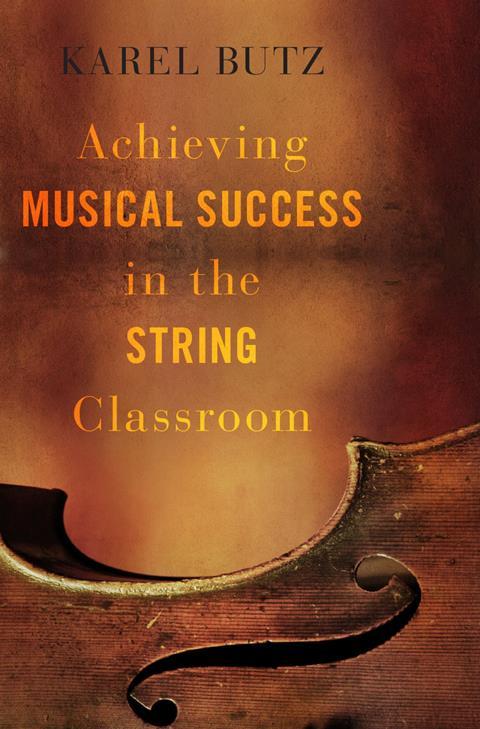Brian Hodges reads a comprehensive guide to string teaching by veteran tutor Karel Butz

Achieving Musical Success in the String Classroom
Karel Butz
240PP ISBN 9780190602895
Oxford University Press £22.99
Teaching strings to any level in the classroom can be an overwhelming experience. Usually a music education graduate, whether or not they are a string player, runs a class in how to teach strings. Of course, no amount of studying can ever quite prepare one for when they actually stand in front of their class. However, as a supplement to classroom teaching, Karel Butz’s excellent book Achieving Musical Success in the String Classroom aims to be an exhaustive resource for the string orchestra teacher.
It’s obvious that Butz is working from a wealth of experience on his own, and the opening chapters are rich in material designed to shape the reader’s own teaching philosophy. No one would argue that nuts-and-bolts technique isn’t important in learning a stringed instrument, but should that be the main focus, or is there a larger picture to keep in mind? Butz has plenty to say on that topic.
After the introductory chapters, the book is divided into various sections covering almost every topic on teaching strings in a classroom. From ‘Establishing a Healthy Foundation for Learning’, to specific exercises for left- and right-hand techniques, to ‘Characteristics of a Successful Rehearsal’, to common problems and solutions in rehearsal, and even to music theory and ear training, the various chapters are organised clearly. It’s hard to think of a topic that Butz doesn’t cover at least in some way.
In the section devoted to specific exercises, Butz breaks it down even further into Beginning, Intermediate and Advanced, with apt activities for each level. A good number of the exercises are accompanied by example videos averaging three to five minutes in length found on the publisher’s website. I viewed a selection of the videos and found them helpful in demonstrating how the activity would work in the classroom setting, with the author himself executing the exercise with his students. While the videos are enlightening, I found some of the written instructions a little labyrinthine; perhaps they could have been laid out in bullet points, rather than wordy prose, for ease of reading. It would also have been nice to have illustrations or diagrams for the warm-
up and stretching exercises he describes.
These are minor quibbles, as every other aspect of the book is clear and contains myriad useful tools. Among the most beneficial elements Butz has included are examples of administrative paperwork, such as lesson plans, a syllabus, letters to parents and rubrics for assessing auditions and playing tests. These will give the neophyte orchestra teacher wonderful stepping stones for classroom planning.
Another passage I found engaging was a section where he covers motivation in the rehearsal. It’s easy for teachers to sink into a familiar routine, and I appreciated Butz’s insistence on constantly assessing what you are including. ‘I approach each rehearsal by asking myself the following question: “If I had only one opportunity to make a positive impact on increasing students’ performance skills, what musical aspect would I most concentrate upon during rehearsal?”’ – a good reminder indeed.
Having taught a class in string techniques for many years, I’m familiar with the majority of the literature out there. I would definitely recommend Butz’s book, and would have no qualms about endorsing it to students. For the beginner string orchestra teacher in particular, this book’s many teaching exercises and resources could be a life-saver.
BRIAN HODGES


































No comments yet